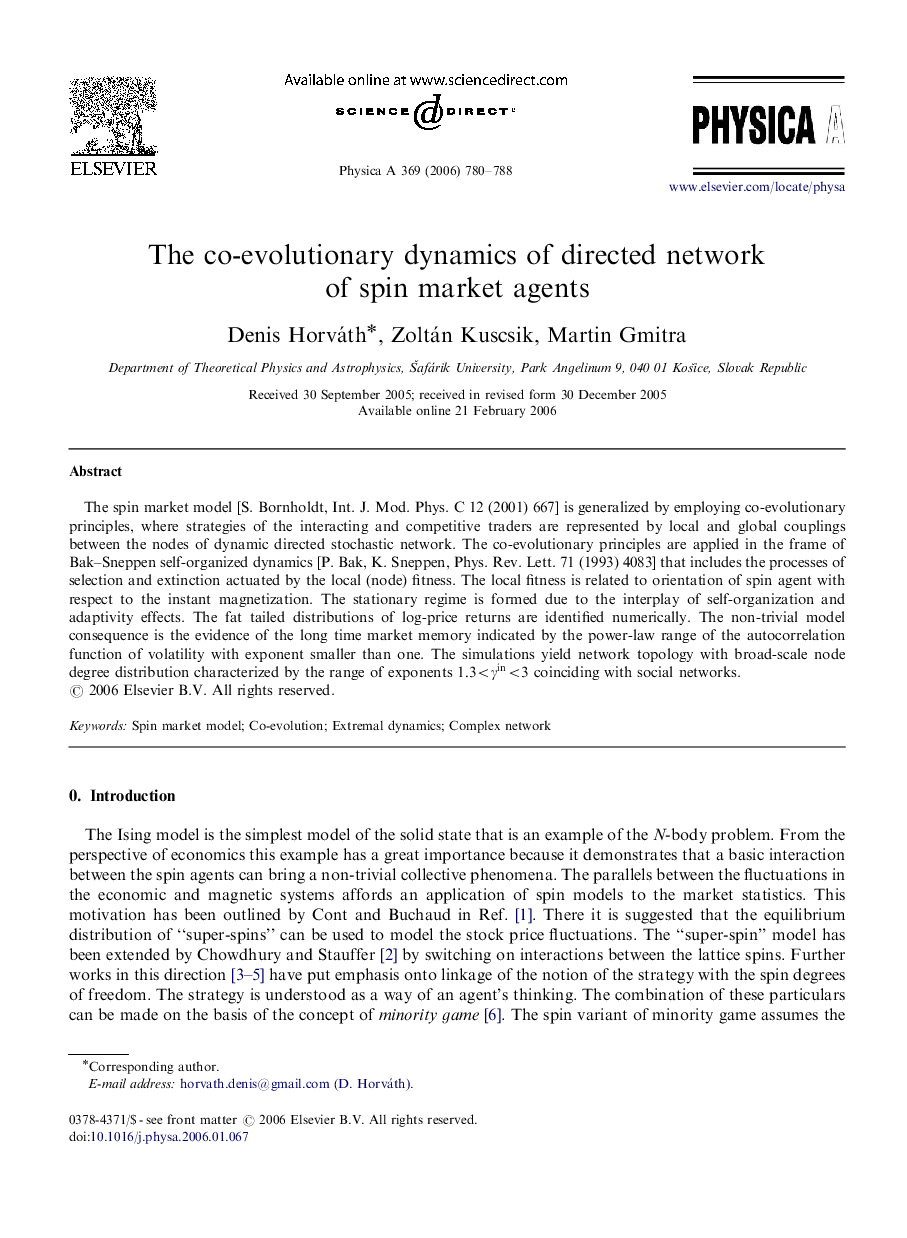| Article ID | Journal | Published Year | Pages | File Type |
|---|---|---|---|---|
| 979759 | Physica A: Statistical Mechanics and its Applications | 2006 | 9 Pages |
Abstract
The spin market model [S. Bornholdt, Int. J. Mod. Phys. C 12 (2001) 667] is generalized by employing co-evolutionary principles, where strategies of the interacting and competitive traders are represented by local and global couplings between the nodes of dynamic directed stochastic network. The co-evolutionary principles are applied in the frame of Bak-Sneppen self-organized dynamics [P. Bak, K. Sneppen, Phys. Rev. Lett. 71 (1993) 4083] that includes the processes of selection and extinction actuated by the local (node) fitness. The local fitness is related to orientation of spin agent with respect to the instant magnetization. The stationary regime is formed due to the interplay of self-organization and adaptivity effects. The fat tailed distributions of log-price returns are identified numerically. The non-trivial model consequence is the evidence of the long time market memory indicated by the power-law range of the autocorrelation function of volatility with exponent smaller than one. The simulations yield network topology with broad-scale node degree distribution characterized by the range of exponents 1.3<γin<3 coinciding with social networks.
Related Topics
Physical Sciences and Engineering
Mathematics
Mathematical Physics
Authors
Denis Horváth, Zoltán Kuscsik, Martin Gmitra,
